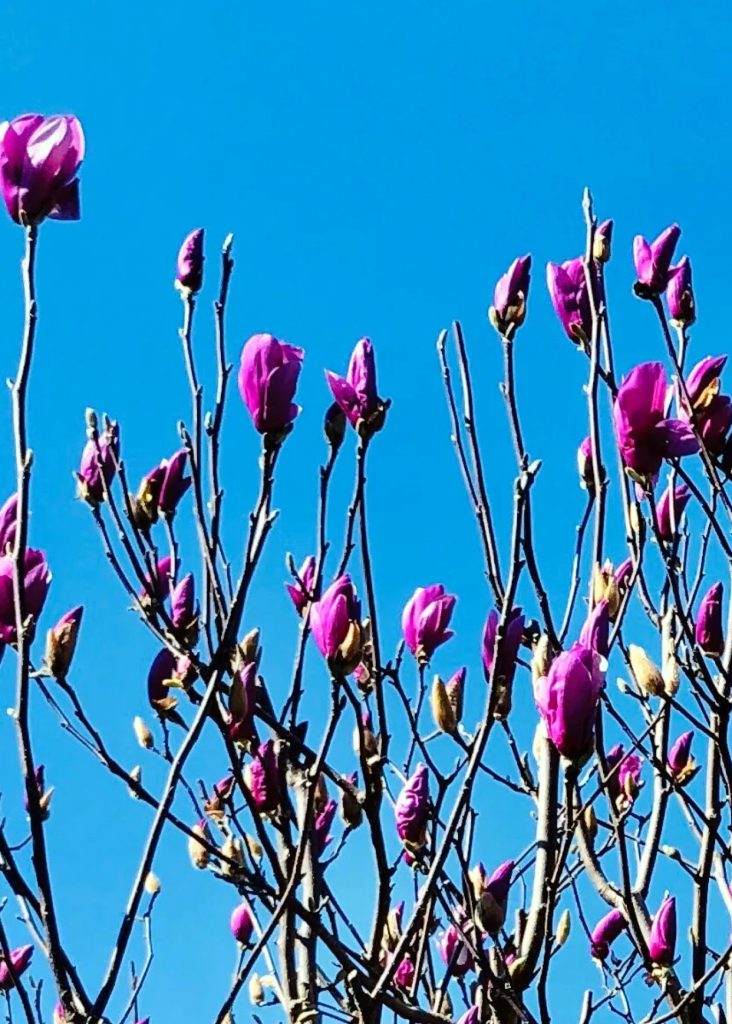
The purple buds are inflated by Mokuren (magnolia) as if to enjoy the blue sky of spring infinitely. The flower language “love for nature” is convincing. Generally speaking, Mokuren refers to this purple magnolia. Mokuren has different colors on the inside and outside of the flower, the inside is white, but the outside is deep purple. There are eight petals of the flower, and when the flower begins to bloom, the leaves come out. Originally, it seems that Mokuren were planted not for ornamental purposes but for headaches and rhinitis by the buds called “shinni” in Chinese medicine. On the other hand, Hakumokuren (yuran magnolia) is a tall tree that reaches a height of 20 m, and its petals spread slightly laterally. In addition, Hakumokuren has nine petals, and leaves appear during flowering and are hidden by the leaves when the flowers are finished. Kobushi (magnolia kobus) is a flower that is very similar to Hakumokuren. If the white flowers are blooming with the white flowers facing up, it can be judged as Kobushi, and if the flowers are facing here and there, it can be judged as Hakumokuren. And Larger flowers can be judged as Hakumokuren, and smaller flowers can be judged as Kobushi. The height of Hakumokuren is 3 to 5 meters, while that of Kobushi is 5 to 20 meters.
春の青空を目一杯謳歌する様に木蓮が紫色の蕾を膨らませています。花言葉「自然への愛」は納得です。一般的に木蓮といえばこの紫木蓮を指します。紫木蓮は、花の内側と外側の色が異なっていて、内側は白い色をしていますが、外側は濃い紫色をしています。花の花びらは8枚あり、花が咲き始めると葉が出てきます。元々は観賞のためではなく、漢方で「辛夷」(しんい)と呼ばれる蕾を、頭痛や鼻炎の薬とするために植えられたようです。一方、白木蓮は樹高20mに達する高木で、花弁はやや横に広がります。また、白木蓮は、花弁は9枚で、開花中に葉が出て花が終わるころには葉に隠れてしまいます。白木蓮とよく似た花にコブシがあります。白い花を上に向けて開花していたら白木蓮、横などあちこちに花が向いていればコブシと判断できます。また花が大きいと白木蓮、小さいとコブシと区別することもできます。白木蓮の樹高は3メートルから5メートルですが、コブシは5メートルから20メートルです。
